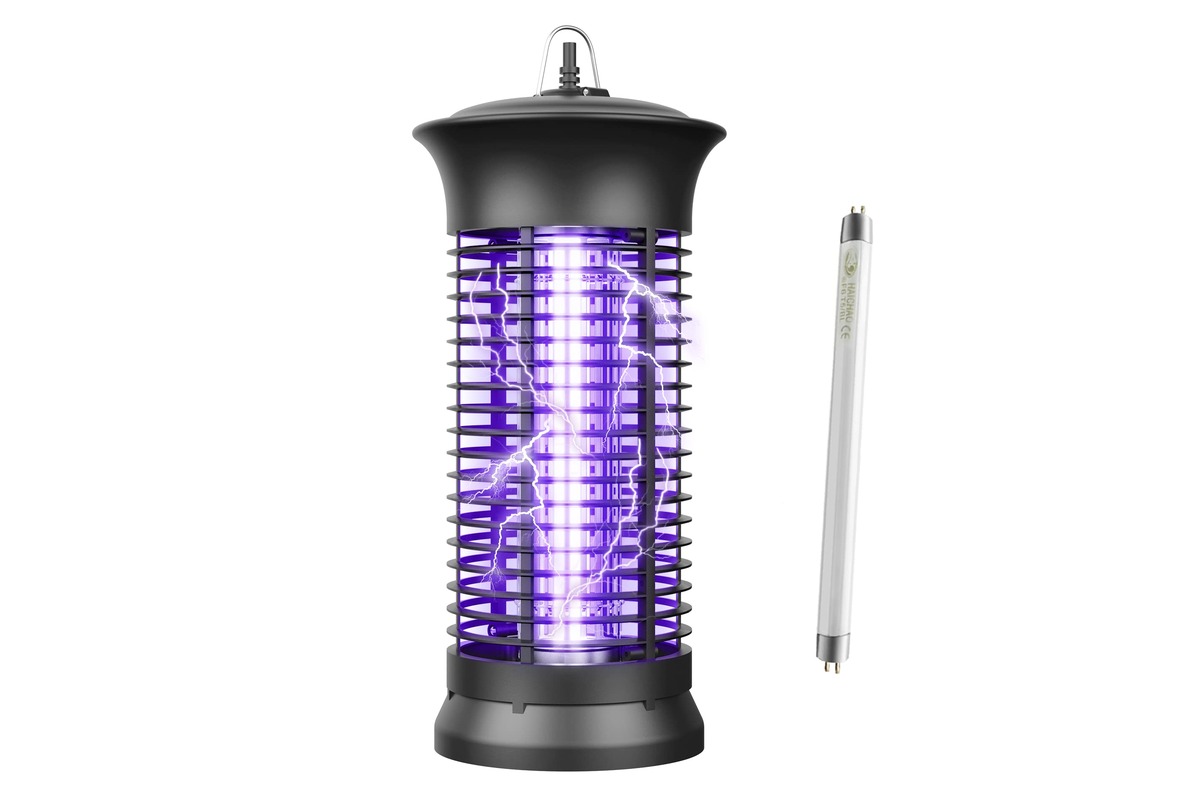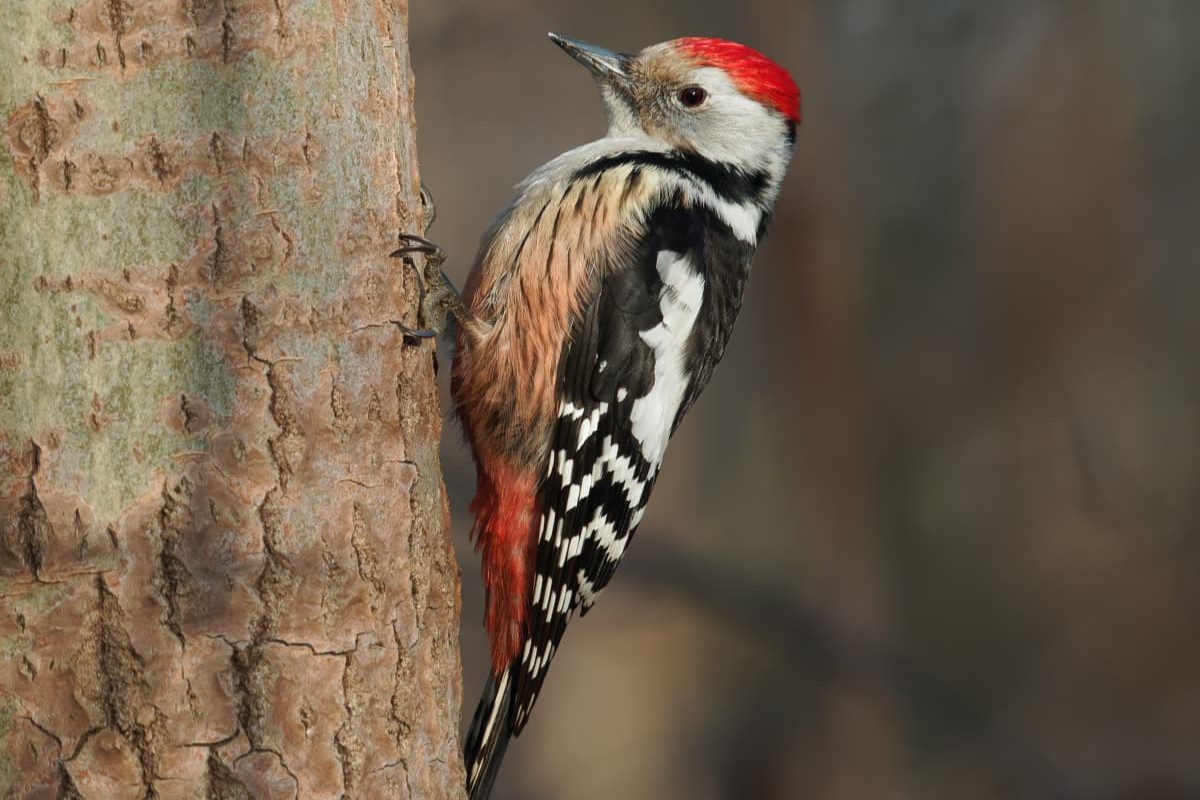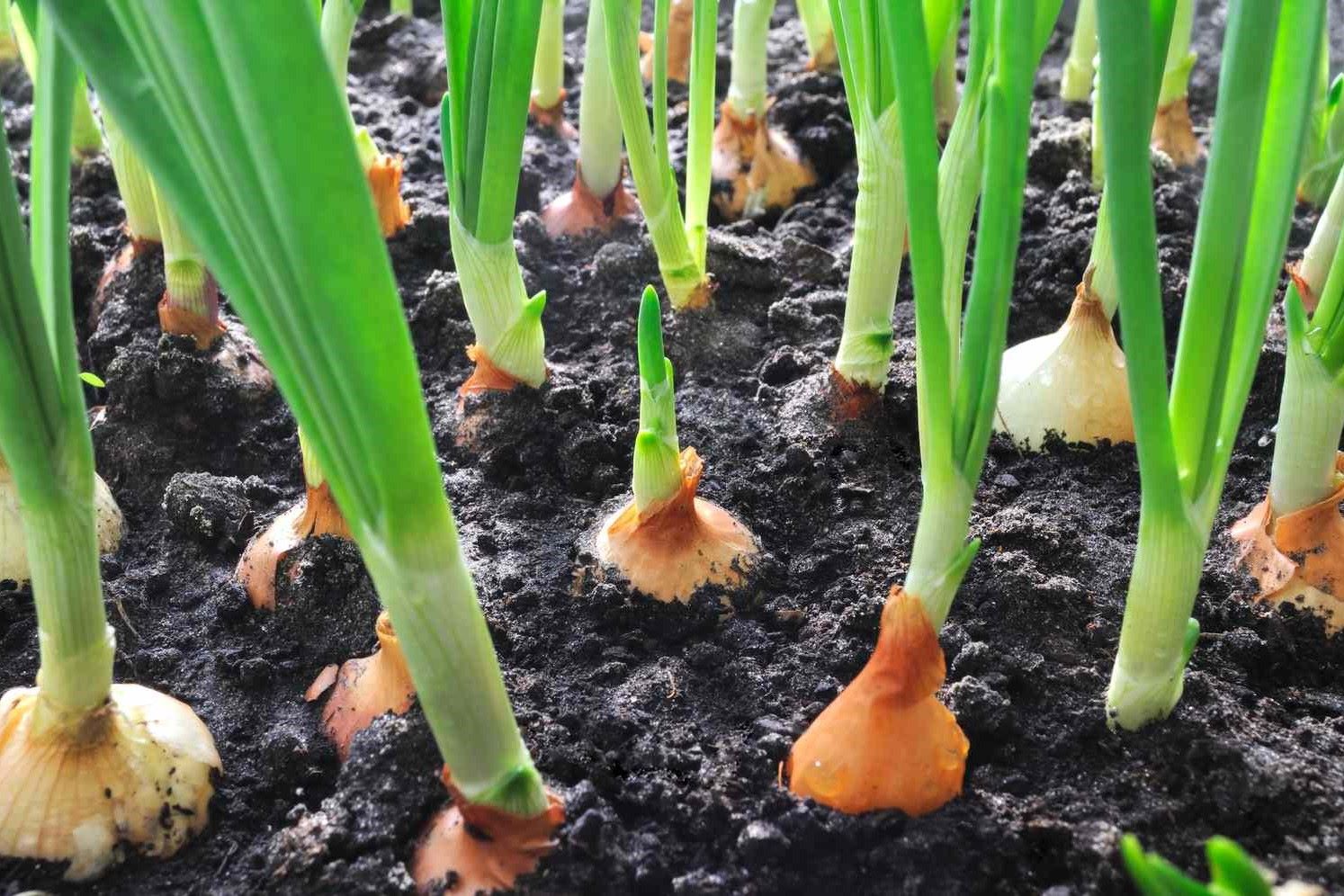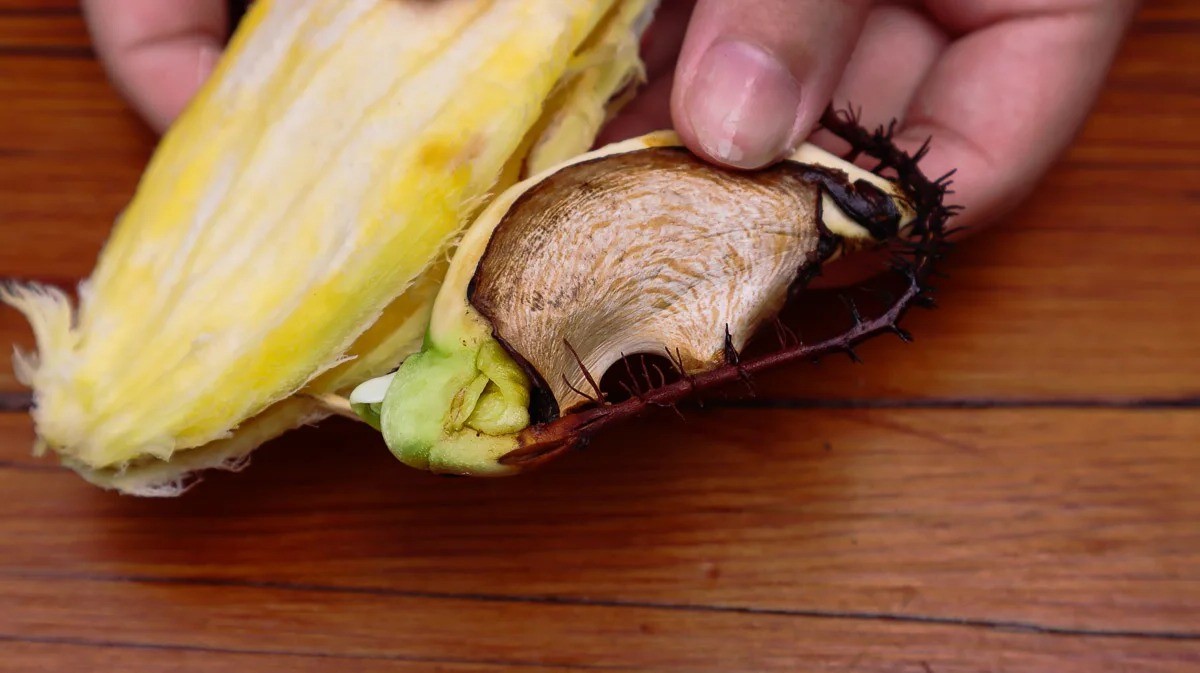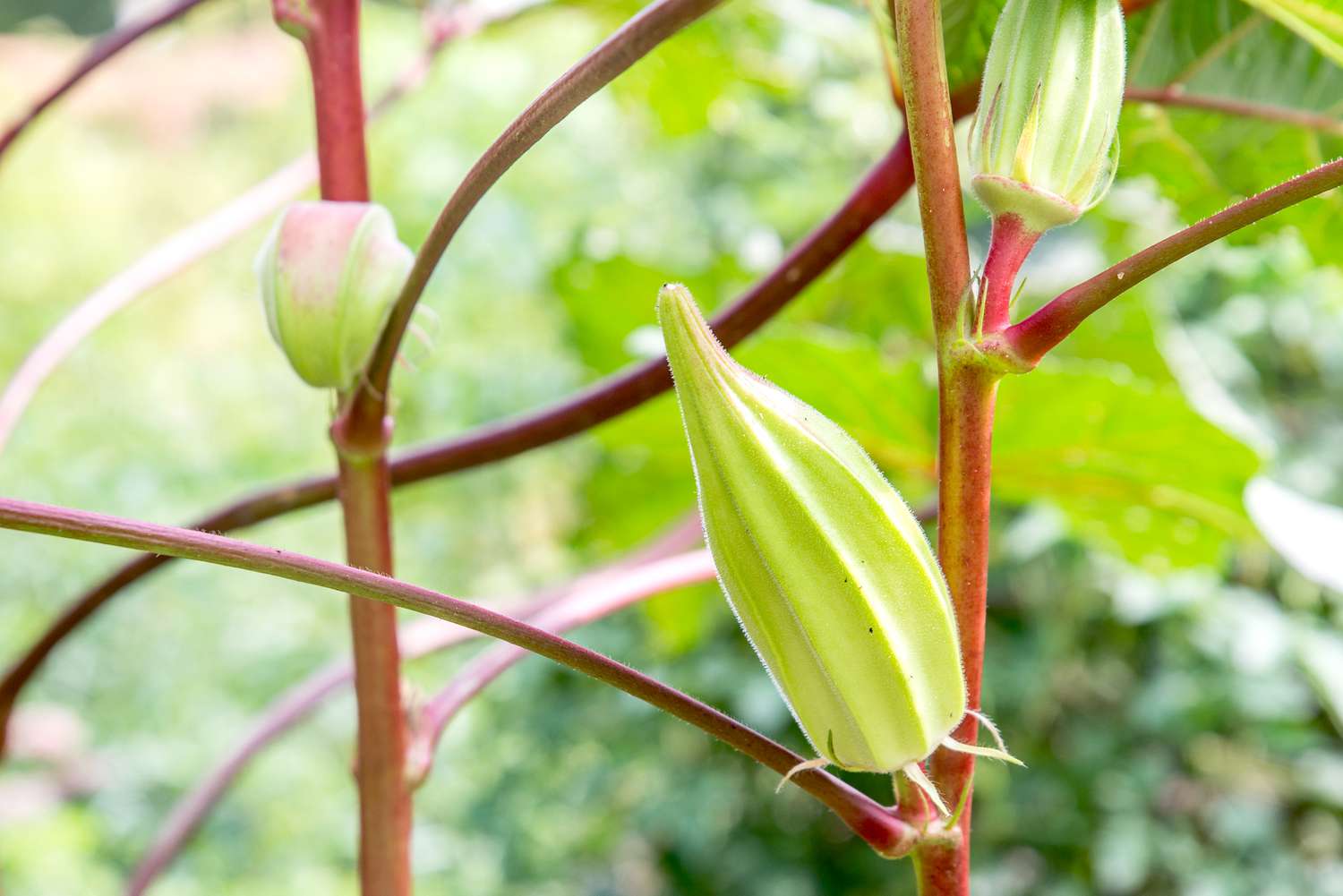Home>Food and Cooking>The Ultimate Guide To Safely Growing Pumpkins On A Trellis
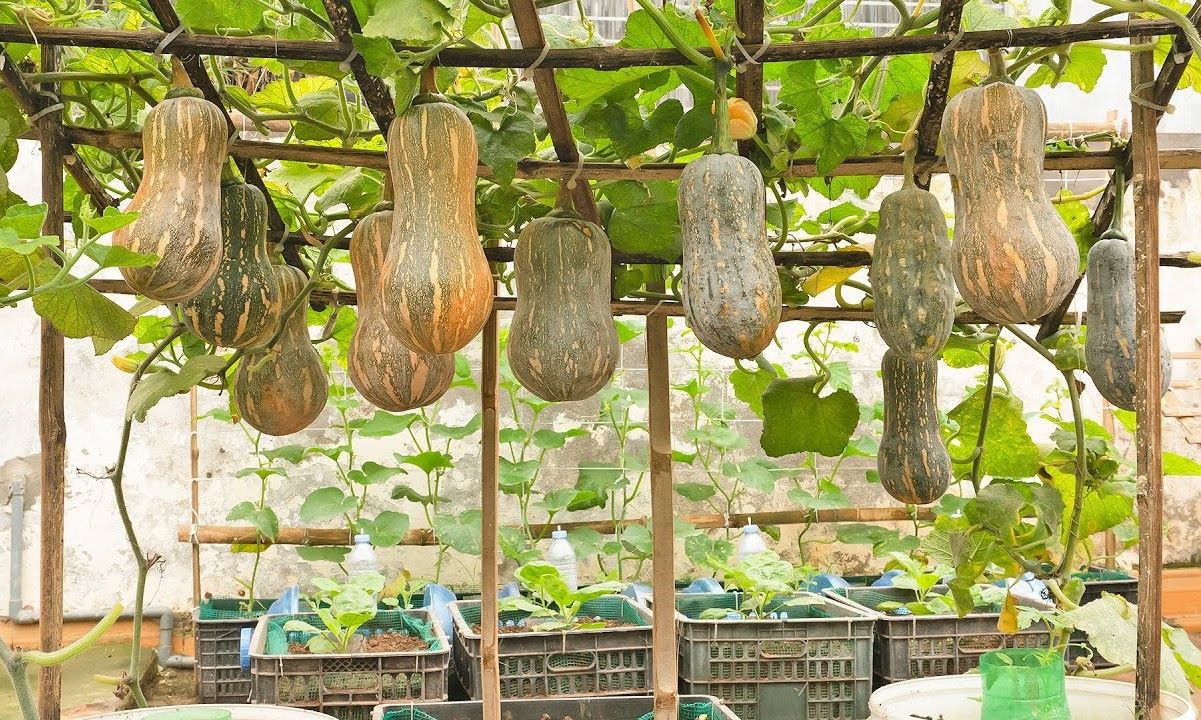

Food and Cooking
The Ultimate Guide To Safely Growing Pumpkins On A Trellis
Published: January 21, 2024
Learn how to safely grow pumpkins on a trellis with our comprehensive guide. Discover expert tips and techniques for successful pumpkin cultivation. Perfect for food and cooking enthusiasts!
(Many of the links in this article redirect to a specific reviewed product. Your purchase of these products through affiliate links helps to generate commission for Noodls.com, at no extra cost. Learn more)
Table of Contents
- Introduction
- Benefits of Growing Pumpkins on a Trellis
- Choosing the Right Trellis for Pumpkins
- Selecting the Best Pumpkin Varieties for Trellising
- Preparing the Soil for Trellised Pumpkin Growth
- Planting and Caring for Trellised Pumpkins
- Managing Pests and Diseases in Trellised Pumpkin Gardens
- Harvesting and Storing Trellised Pumpkins
- Conclusion
Introduction
Growing pumpkins on a trellis is a unique and efficient method that offers numerous benefits for gardeners. Traditionally, pumpkins sprawl across the ground, consuming a significant amount of space in the garden. However, by utilizing a trellis, gardeners can maximize their space while promoting healthier pumpkin growth. This comprehensive guide will delve into the various aspects of safely growing pumpkins on a trellis, providing valuable insights and practical tips for a successful harvest.
When it comes to gardening, space is often a limiting factor, especially for urban and suburban gardeners. The traditional method of allowing pumpkin vines to spread across the ground can quickly monopolize a garden, leaving little room for other crops. By employing a trellis, gardeners can effectively utilize vertical space, allowing for the cultivation of pumpkins in a more compact and organized manner.
Moreover, growing pumpkins on a trellis can lead to cleaner and healthier fruits. By keeping the pumpkins off the ground, they are less susceptible to rot and pests. Additionally, trellising promotes better air circulation around the plants, reducing the risk of fungal diseases and promoting overall plant health.
This guide will cover essential topics, including selecting the right trellis for pumpkins, choosing suitable pumpkin varieties for trellising, preparing the soil for trellised pumpkin growth, and providing proper care throughout the growing season. Furthermore, it will address the management of pests and diseases commonly associated with trellised pumpkin gardens, as well as the best practices for harvesting and storing trellised pumpkins.
Whether you are a seasoned gardener looking to optimize your garden space or a beginner eager to explore innovative growing techniques, this guide will equip you with the knowledge and skills needed to embark on a successful trellised pumpkin growing journey. Let's dive into the world of trellised pumpkin gardening and unlock the potential of vertical space for a bountiful harvest.
Benefits of Growing Pumpkins on a Trellis
Growing pumpkins on a trellis offers a multitude of advantages that cater to both practical and horticultural needs. By opting for vertical cultivation, gardeners can maximize their available space, making it an ideal method for those with limited gardening areas. The vertical growth of trellised pumpkins allows for efficient space utilization, making it a viable option for urban and suburban gardeners, as well as those with smaller plots.
Trellising pumpkins also contributes to the overall health and quality of the fruits. By lifting the pumpkins off the ground, the risk of rot and pest infestations is significantly reduced. This method also facilitates better air circulation around the plants, minimizing the likelihood of fungal diseases. As a result, trellised pumpkins are often cleaner and healthier, with improved resistance to common garden pests and diseases.
Furthermore, the vertical growth of pumpkins on a trellis can enhance the aesthetic appeal of the garden. The sight of vibrant pumpkin vines climbing the trellis creates a visually striking and picturesque display, adding an element of beauty to the garden landscape. Additionally, trellising can simplify the process of tending to the plants, as it allows for easier access to the pumpkins for pruning, harvesting, and maintenance tasks.
In addition to the practical and horticultural benefits, trellising pumpkins can also lead to increased yields. With the vines growing vertically, the fruits are better positioned to receive ample sunlight, essential for healthy growth and development. This optimal sun exposure can result in larger, more robust pumpkins, ultimately improving the overall harvest.
Overall, the benefits of growing pumpkins on a trellis extend beyond space efficiency and pest management. This method promotes healthier plants, enhances the visual appeal of the garden, and can potentially lead to higher yields. By harnessing the advantages of trellising, gardeners can cultivate pumpkins in a more sustainable, organized, and productive manner, unlocking the full potential of their gardening space.
Choosing the Right Trellis for Pumpkins
Selecting the appropriate trellis is crucial for the successful cultivation of pumpkins in a vertical garden setting. When choosing a trellis for pumpkins, several factors should be considered to ensure optimal support and growth. The trellis should be sturdy and durable, capable of withstanding the weight of mature pumpkins and the sprawling nature of the vines. Additionally, it should provide ample space for the vines to climb and the pumpkins to develop without overcrowding.
One of the most popular trellis options for pumpkins is a sturdy wooden A-frame structure. This type of trellis offers excellent support for the vines and pumpkins while allowing for easy access and maintenance. The A-frame design provides a spacious vertical area for the vines to climb, ensuring that they have sufficient room to spread and thrive. Additionally, the horizontal beams of the A-frame can accommodate the weight of developing pumpkins, reducing the risk of structural strain.
Another effective trellis option is a metal or PVC trellis with a strong grid or netting. This type of trellis provides a supportive framework for the pumpkin vines to climb, offering ample space for vertical growth. The grid or netting design allows for easy attachment of the vines and provides a secure foundation for the developing pumpkins. Furthermore, metal or PVC trellises are durable and weather-resistant, making them suitable for long-term use in the garden.
For gardeners with limited space, a wall-mounted trellis can be a practical choice for growing pumpkins vertically. These trellises can be affixed to a sturdy garden wall or fence, providing vertical support for the vines while maximizing space efficiency. Wall-mounted trellises are available in various materials, including wood, metal, and vinyl, allowing gardeners to select an option that suits their specific needs and garden aesthetics.
When considering the size of the trellis, it is essential to choose a structure that provides adequate height for the pumpkin vines to climb. The trellis should also have sufficient width to accommodate the sprawling nature of the vines and the potential spread of the pumpkin fruits. Additionally, the material of the trellis should be resistant to rot and decay, ensuring its longevity and performance throughout the growing season.
Ultimately, the right trellis for pumpkins should offer sturdy support, ample space for vertical growth, and durability to withstand the demands of the growing plants. By carefully selecting a suitable trellis, gardeners can create an ideal environment for trellised pumpkin cultivation, maximizing space and promoting healthy, productive growth.
Selecting the Best Pumpkin Varieties for Trellising
When it comes to trellising pumpkins, selecting the right varieties is essential for a successful and bountiful harvest. Not all pumpkin varieties are well-suited for vertical growth, so choosing the best ones for trellising is crucial. Certain characteristics make specific pumpkin varieties more suitable for trellising, and understanding these traits can help gardeners make informed decisions when selecting seeds or seedlings.
-
Compact Growth Habit: Look for pumpkin varieties that exhibit a more compact growth habit. These varieties are better suited for vertical cultivation as they are less likely to overwhelm the trellis structure. Compact vines are easier to manage and train onto the trellis, ensuring that they grow upward rather than sprawling excessively.
-
Lack of Excessive Weight: Opt for pumpkin varieties that produce smaller to medium-sized fruits. Trellises may not be able to support the weight of extremely large pumpkins, so choosing varieties that yield moderately sized fruits is advisable. This reduces the risk of the trellis structure becoming strained or damaged under the weight of the developing pumpkins.
-
Vigorous Climbing Ability: Select pumpkin varieties known for their vigorous climbing ability. These varieties exhibit strong, flexible vines that readily latch onto the trellis and ascend vertically. Look for characteristics such as long, sturdy stems and tendrils that facilitate robust climbing, ensuring that the vines can effectively utilize the trellis for support.
-
Disease Resistance: Consider pumpkin varieties that demonstrate resistance to common diseases and pests. Opting for disease-resistant varieties can help mitigate the risk of fungal infections and pest infestations, which can be particularly challenging to manage in trellised environments. Disease-resistant varieties contribute to the overall health and vitality of the trellised pumpkin plants.
-
High Yield Potential: Choose pumpkin varieties known for their high yield potential. While trellising can optimize space and promote healthier growth, it is advantageous to select varieties that offer abundant harvests. High-yielding varieties ensure that gardeners can maximize their vertical garden space and enjoy a plentiful supply of pumpkins.
Some recommended pumpkin varieties that are well-suited for trellising include 'Baby Bear,' 'Sugar Pie,' 'Small Sugar,' and 'Jack Be Little.' These varieties exhibit compact growth habits, produce moderately sized fruits, and demonstrate vigorous climbing abilities, making them ideal candidates for vertical cultivation.
By carefully selecting pumpkin varieties that align with the requirements of trellising, gardeners can set the stage for a successful and rewarding pumpkin growing experience. The right varieties will thrive in a trellised environment, maximizing space efficiency and yielding an impressive harvest of healthy, vibrant pumpkins.
Preparing the Soil for Trellised Pumpkin Growth
Preparing the soil is a critical step in establishing an optimal environment for trellised pumpkin growth. The quality and composition of the soil directly impact the health, development, and productivity of the pumpkin plants. When cultivating pumpkins on a trellis, specific soil preparation techniques can enhance the plants' ability to thrive in a vertical garden setting.
First and foremost, the soil should be well-draining to prevent waterlogging, which can hinder root development and lead to plant stress. Amending the soil with organic matter, such as compost or well-rotted manure, improves its structure and drainage capabilities. This organic amendment enriches the soil with essential nutrients and promotes a favorable environment for root establishment and nutrient uptake.
Additionally, incorporating a balanced fertilizer into the soil prior to planting provides the pumpkin plants with the nutrients they need for robust growth. A fertilizer with a balanced NPK (nitrogen, phosphorus, and potassium) ratio supports healthy vine development, flowering, and fruit production. It is essential to follow the recommended application rates to avoid over-fertilization, which can negatively impact plant health.
Furthermore, maintaining the soil pH within the optimal range (typically around 6.0 to 6.8 for pumpkins) is crucial for nutrient availability. Testing the soil pH and making necessary adjustments ensures that the pumpkin plants can effectively absorb essential nutrients from the soil. Adding lime to raise the pH or elemental sulfur to lower it can help achieve the desired soil acidity level for optimal pumpkin growth.
Incorporating a layer of mulch around the base of the trellised pumpkin plants offers several benefits. Mulch helps regulate soil temperature, conserves moisture, suppresses weed growth, and reduces the risk of soil-borne diseases. Organic mulching materials, such as straw or shredded leaves, contribute to soil fertility as they decompose, enriching the soil with organic matter and supporting microbial activity.
Lastly, ensuring adequate soil moisture is essential for the healthy growth of trellised pumpkins. Consistent watering, particularly during the plants' establishment and fruit development stages, supports vigorous vine growth and the production of high-quality pumpkins. Implementing a drip irrigation system or providing regular, deep watering helps maintain optimal soil moisture levels, promoting robust root development and overall plant health.
By meticulously preparing the soil for trellised pumpkin growth, gardeners can create an environment conducive to vigorous vine development, abundant flowering, and the production of healthy, high-quality pumpkins. Implementing these soil preparation practices sets the stage for a successful and rewarding trellised pumpkin growing experience.
Planting and Caring for Trellised Pumpkins
Planting and caring for trellised pumpkins require careful attention to ensure the successful growth and development of the plants in a vertical garden setting. From seedling or transplanting to ongoing maintenance throughout the growing season, following best practices for planting and caring for trellised pumpkins is essential for a bountiful harvest.
Planting the Seeds or Transplants
When planting trellised pumpkins, it is crucial to consider the spacing between plants to optimize vertical growth and facilitate adequate air circulation. Planting the seeds or transplants at the base of the trellis allows the vines to naturally ascend as they grow. Proper spacing, typically 2-3 feet apart, ensures that each plant has sufficient room to thrive without overcrowding.
Training the Vines
As the pumpkin vines begin to grow, gently guide them towards the trellis, encouraging upward growth. Training the vines onto the trellis prevents them from sprawling uncontrollably and promotes vertical climbing. Tendrils and flexible stems can be gently looped around the trellis structure to support the upward growth of the vines.
Providing Structural Support
As the pumpkin plants mature, the weight of developing fruits may require additional support. Using soft ties or fabric strips, secure the growing pumpkins to the trellis to prevent them from sagging or becoming dislodged. This extra support ensures that the fruits remain secure as they continue to grow and mature.
Regular Maintenance and Care
Throughout the growing season, regular maintenance tasks such as pruning, weeding, and monitoring for pests and diseases are essential for the health and productivity of trellised pumpkins. Pruning the vines helps manage their growth and promotes better air circulation, reducing the risk of fungal diseases. Additionally, diligent pest and disease monitoring allows for early intervention, minimizing potential damage to the plants.
Watering and Fertilization
Consistent and adequate watering is crucial for trellised pumpkins, especially during periods of active growth and fruit development. Deep, regular watering promotes robust root development and supports the plants' overall health. Additionally, applying a balanced fertilizer at key growth stages provides the necessary nutrients for vigorous vine growth and the production of high-quality pumpkins.
By adhering to these planting and care practices, gardeners can ensure that trellised pumpkins receive the attention and support they need to thrive in a vertical garden environment. Implementing these strategies fosters healthy, productive plants and sets the stage for a successful harvest of vibrant, bountiful pumpkins.
Managing Pests and Diseases in Trellised Pumpkin Gardens
Effectively managing pests and diseases is crucial for maintaining the health and productivity of trellised pumpkin gardens. In a vertical garden setting, proactive pest and disease management strategies are essential to mitigate potential threats and ensure the successful growth of the pumpkin plants.
Integrated Pest Management (IPM)
Implementing an Integrated Pest Management (IPM) approach is fundamental in controlling pests while minimizing the use of chemical interventions. Regular scouting for common pumpkin pests, such as squash bugs, cucumber beetles, and aphids, allows for early detection and targeted intervention. Handpicking pests, applying insecticidal soaps, and introducing beneficial insects, such as ladybugs and lacewings, can help manage pest populations without resorting to broad-spectrum pesticides.
Disease Prevention
Preventing diseases is equally important in trellised pumpkin gardens. Proper spacing between plants and maintaining good air circulation around the vines can reduce the risk of fungal diseases, including powdery mildew and downy mildew. Additionally, applying preventative fungicidal sprays, such as neem oil or copper-based products, can help protect the plants from fungal infections, particularly during periods of high humidity.
Organic Remedies
For gardeners practicing organic methods, several natural remedies can effectively manage pests and diseases. Neem oil, derived from the neem tree, acts as a natural insecticide and fungicide, targeting a wide range of pests and diseases. Furthermore, introducing predatory insects, such as parasitic wasps and predatory mites, contributes to biological pest control, reducing pest populations in a natural and sustainable manner.
Crop Rotation
Implementing a crop rotation strategy can help mitigate the risk of recurring pests and diseases. By rotating pumpkin plants with unrelated crops in subsequent growing seasons, gardeners disrupt pest and disease cycles, reducing the buildup of specific pathogens and pests in the soil. This practice promotes overall soil health and minimizes the reliance on chemical interventions.
Vigilant Monitoring
Regular monitoring of trellised pumpkin plants is essential for early pest and disease detection. Inspecting the plants for signs of pest damage, unusual discoloration, or wilting leaves enables prompt intervention, preventing potential infestations from escalating. Timely identification of pest and disease issues allows for targeted and effective management measures, minimizing the impact on plant health.
By integrating these pest and disease management practices into trellised pumpkin gardens, gardeners can create a resilient and healthy growing environment for their plants. Proactive measures, combined with sustainable and natural interventions, contribute to the overall success of trellised pumpkin cultivation, ensuring the production of vibrant, pest-free pumpkins.
Harvesting and Storing Trellised Pumpkins
As the trellised pumpkins reach maturity, it is essential to employ proper harvesting techniques to ensure the preservation of their quality and flavor. Harvesting should be timed appropriately, typically occurring when the pumpkins have developed their characteristic deep color and the rinds have hardened. A common indicator of maturity is when the vines begin to dry and the stems near the pumpkins turn brown.
When harvesting trellised pumpkins, it is crucial to handle the fruits with care to avoid damaging the vines or the pumpkins themselves. Using sharp pruning shears or a clean, serrated knife, carefully cut the pumpkins from the vines, leaving a few inches of the stem attached. This residual stem helps prolong the pumpkins' shelf life and reduces the risk of rot during storage.
After harvesting, the pumpkins should be cured to enhance their storability and flavor. Curing involves placing the pumpkins in a warm, dry area with good air circulation for a period of 10-14 days. This process allows the skins to harden and any minor wounds to heal, reducing the risk of spoilage during storage.
Once cured, trellised pumpkins can be stored in a cool, dry location with adequate ventilation. Ideal storage conditions include temperatures ranging from 50 to 55 degrees Fahrenheit and relative humidity levels of 50-70%. Proper air circulation is crucial to prevent moisture buildup, which can lead to mold and decay.
When storing trellised pumpkins, it is important to inspect them regularly for any signs of decay or damage. Any pumpkins showing signs of deterioration should be used promptly, as they may not store well for an extended period. Additionally, separating damaged or diseased pumpkins from healthy ones helps prevent the spread of decay and prolongs the shelf life of the stored pumpkins.
By following these guidelines for harvesting and storing trellised pumpkins, gardeners can ensure that their hard-earned harvest remains fresh and flavorful for an extended period. Properly stored pumpkins can be enjoyed in a variety of culinary endeavors, from delicious pumpkin pies and soups to festive seasonal decorations, enhancing the joy and satisfaction of the trellised pumpkin growing experience.
Conclusion
In conclusion, the practice of growing pumpkins on a trellis presents a wealth of benefits and opportunities for gardeners seeking to maximize their space, promote healthier plant growth, and achieve bountiful harvests. By embracing the vertical cultivation of pumpkins, gardeners can optimize their available garden space, making it an ideal solution for urban, suburban, and small-scale garden environments. The method of trellising not only conserves space but also enhances the visual appeal of the garden, creating a picturesque display of vibrant pumpkin vines climbing gracefully upward.
The advantages of trellising extend beyond spatial efficiency, encompassing the promotion of cleaner, healthier pumpkins. By elevating the pumpkins off the ground, the risk of rot and pest infestations is significantly reduced, leading to a higher quality harvest. Additionally, trellising facilitates better air circulation around the plants, mitigating the likelihood of fungal diseases and enhancing overall plant vitality.
Selecting the right trellis and suitable pumpkin varieties, along with meticulous soil preparation, are essential components of successful trellised pumpkin cultivation. The choice of a sturdy, well-designed trellis and the selection of compact, climbing pumpkin varieties are pivotal in creating an optimal environment for vertical growth. Furthermore, thorough soil preparation, including amending with organic matter and ensuring proper drainage, sets the stage for robust vine development and healthy fruit production.
Planting, caring for, and managing trellised pumpkins require attention to detail and a proactive approach to pest and disease control. From the initial planting of seeds or transplants to ongoing maintenance and vigilant monitoring, these practices contribute to the overall health and productivity of the trellised pumpkin plants. Implementing integrated pest management strategies and disease prevention measures ensures that the plants thrive in a sustainable and resilient manner.
Harvesting and storing trellised pumpkins mark the culmination of the growing journey, emphasizing the importance of proper timing and post-harvest care. By employing careful harvesting techniques and implementing curing and storage practices, gardeners can prolong the shelf life of their trellised pumpkins, preserving their freshness and flavor for an extended period.
In essence, the art of trellising pumpkins transcends conventional gardening practices, offering a harmonious blend of space efficiency, plant health, and abundant yields. Embracing this innovative approach unlocks the potential of vertical space, allowing gardeners to cultivate vibrant, healthy pumpkins while transforming their garden landscapes into captivating displays of natural beauty. Whether for culinary delights or decorative purposes, trellised pumpkins embody the rewards of sustainable, space-conscious gardening, enriching the gardening experience with an abundance of wholesome, homegrown treasures.





